Issue:March 2024
SPECIAL FEATURE - Improving Bioavailability & Solubility: The Never-Ending Quest
Poor water solubility and bioavailability are long-standing challenges in the drug development process. Around 90% of the drug candidates in the current development pipeline and close to 40% of the marketed pharmacological products are associated with concerns related to solubility and/or permeability.1 Therefore, industry continues on what seems like a never-ending quest to overcome these challenges.
Tamas Solymosi, Lead Scientist at Nanoform, points to several new technologies that have reached preclinical or clinical evaluation. These include nanoprecipitation, a bottom-up process to assemble amorphous or crystalline nanoparticles composed of the API and block-copolymers or other stabilizers. Among others, clofazimine and lumefantrin – two difficult-to-formulate APIs – were successfully processed using nanoprecipitation. “KinetiSol™ technology employs a high-energy kneading method to prepare solid dispersions of APIs, which are otherwise difficult to incorporate, into ASDs using standard spray drying or melt extrusion technologies,” says Mr. Solymosi.
Formulators turn to modifying physical and chemical API characteristics to achieve improved solubility and bioavailability. One strategy that has recently emerged are drug-drug co-amorphous (CAM) systems. They have gained interest in their ability to improve solubility as well as an alternative to traditional fixed-dose combinations. In CAM systems, low-molecular-weight coformers – sugars, organic acids, amino acids, and surfactants – are used instead of polymers to enhance physical stability. No energy of lattice rearrangement needs to be overcome during the dissolution process, enabling high drug solubility and rapid dissolution.2
Co-crystals, a class of crystalline materials composed of two or more components, have gained attention in sustainable and green research due to their potential for enhancing drug delivery systems.3 By utilizing eco-friendly solvent systems and renewable starting materials, researchers are developing environmentally benign synthesis methods for co-crystal production. These sustainable approaches not only minimize the environmental impact but also promote the development of greener pharmaceuticals with improved solubility and bioavailability.3
There is also rising demand for cyclodextrins to enhance solubility. Their ability to form inclusion complexes with various drug molecules, improving bioavailability, has led to increased adoption in pharma and a possible market value of $579.6 million by 2032.4
Learn more about these, and other, technologies in this exclusive Drug Development & Delivery annual report.
Adare Pharma Solutions: Value Creation & Differentiation for Customers
High Throughput Screening (HTPS) for lead identification has led to a significant surge in new compounds exhibiting poor aqueous solubility and/or bioavailability (BA). This can be attributed to HTPS’s inherent tendency to identify lipophilic leads, which favor target binding for efficacy. Despite the strides made in pharmaceutical technology, the challenge of addressing solubility and BA issues in these compounds remains a formidable one for formulators.
“Efforts to tackle BA issues necessitate a comprehensive understanding of the underlying causes and mastery in the development of tailored formulation strategies,” says Srinivasan Shanmugam, PhD, Executive Director of Pharmaceutical Sciences, Business Support & New Technologies, Adare Pharma Solutions. Poor bioavailability can stem from a variety of factors, including drug-related issues such as inadequate solubility, slow dissolution rate, limited permeability, and physiological barriers like first-pass metabolism and P-glycoprotein (Pgp)-mediated efflux.
While drug absorption is influenced by drug-related factors classified under the Biopharmaceutical Classification System (BCS), physiological barriers ultimately determine the overall BA of a drug. Therefore, devising effective formulation strategies means navigating both drug-related and physiological factors. A grasp of the physicochemical properties of drugs – such as logP, melting point, and ionization – is also crucial for selecting appropriate formulation techniques.
Adare Pharma Solutions utilizes both traditional and innovative technologies to enhance solubility. Dr. Shanmugam explains that on the traditional strategies front, Adare has extensive expertise in creating amorphous solid dispersions to enhance solubility of poorly water-soluble compounds with the use of spray dryer or hot melt extruder. Two examples include:
- Diffucaps®: “Our specialized Diffucaps technology creates acidic or basic micro-environments with organic acid or alkaline buffers to augment the solubility of pH-dependent and poorly water-soluble drugs,” he says. Additionally, Diffucaps is a fluid bed-based process so it has the ability to create amorphous solid dispersions.
- Optimum®: This technology platform effectively enhances the solubility and permeability of various BCS class drugs by generating lipid microspheres and amorphous solid dispersions, Dr. Shanmugam says.
“Our technologies overcome the challenges of solubility issues with simplicity, speed, and efficacy,” he says. “Our solubility/BA enhancement capabilities, combined with our expertise in developing easy-to-swallow and palatable patient-centric formulations, deliver value creation and differentiation for our customers.”
Ascendia Pharma: A 3-Pronged Formulation Approach
New Chemical Entities (NCEs) have created a bottleneck for improving the bioavailability of drugs for unmet medical needs. Thus, it has fueled the interest to adapt more innovative approaches such as lipid and polymeric nanoparticle technology for parenteral and oral delivery of drugs. Identifying the appropriate ingredients or excipients (lipids/polymers) for improving solubility and bioavailability is challenging, even more so with the novel ingredients due to lack of safety and regulatory guidelines. In spite of these challenges, FDA-approved inactive ingredients compatible with lipid-based self-emulsifying delivery systems (SEDDS), amorphous solid dispersions (ASD), co-precipitation, and Kinetisol® among others, have been used to enhance the solubility and bioavailability of molecules.
Ascendia is taking a three-pronged, tailored formulation approach to address these challenges. First, is to find the right excipients, polymers, and solvent by screening molecules for maximum solubility. Second, is employing its platform technologies – LipidSol®, NanoSol®, EmulSol®, and AmorSol® – to identify the right technology for drug loading and stability. Three, is optimizing the formulation by using design of experiments (DOEs) and utilizing intrinsic properties of the compounds.
“These steps are relevant to find the most appropriate formulations with enhanced efficacy and stability of drugs,” says Shaukat Ali, PhD, Senior Director Scientific Affairs and Technical Marketing at Ascendia. “Ascendia’s core capabilities in formulation and analytical development, stability and microbial testing, coupled with cGMP manufacturing suites for sterile and non-sterile drugs, offer unparalleled benefits for expediting drug molecules faster to clinic.”
LipidSol, NanoSol, and EmulSol are based on lipids and solubilizers, while AmorSol is ASD-based. “All are designed with FDA-approved ingredients, and have been applied extensively to improve the solubility and bioavailability of molecules across all modalities by oral and injectable route of administrations,” Dr. Ali says.
As more new molecules are discovered, a good majority of them are lipophilic, BCS Class I and Class IV (with logP 2-8 and high melting) and require non-conventional approaches to improve their solubility and bioavailability. Conventional technologies such as pH modification or salt formation, complexation, and prodrugs due to their own limitation, may not be well suited for developing medium- to high-dose drugs, says Dr. Ali. Therefore, efforts continue to find the relevant technology to yield the desired solubility, bioavailability, and most importantly, stability, with the understanding of scalability in manufacturing of drug products under sterile or non-sterile conditions. “Ascendia Pharma’s enabling platform technologies are poised to address the growing demands for new drug candidates with enhanced bioavailability, and therefore, primed to take the lead in formulation development and manufacturing of those innovative lipophilic medicines,” he says.
Croda Pharma: Specializing in Specific Enhancement Technologies
Croda Pharma specializes in four technologies aimed at improving bioavailability and solubility. First, nanoparticle-based delivery systems such as liposomes, nanoemulsions, and inorganic nanoparticles, offer large surface area to encapsulate drugs that further improves their solubility and bioavailability.5 These systems can also protect active pharmaceutical ingredients from degradation and offer a targeted delivery. Additionally, there is reduction in toxicity, greater safety, and biocompatibility.6 A tool that has recently emerged for the development of nano systems like solid lipid nanocarriers, nanoemulsions, liposomes, etc. is microfluidic technology, which provides enhanced precision, efficiency and functionality7, says Kritika Bajaj, PhD, Research Scientist at Croda Pharma.
Second, self-emulsifying drug delivery systems (SEDDS) and self-microemulsifying drug delivery systems (SMEDDS) are formulations consisting of oils, surfactants, solvents, and drug substance. They spontaneously form oil-in-water emulsions when introduced to aqueous phase. These systems enable improvement in oral bioavailability of a poorly water-soluble drug.8 These systems are easy to make, economical, and scalable, says Dr. Bajaj.
Third, amorphous solid dispersion (ASD) technology involves utilizing excipients to assist in dispersing a poorly soluble drug in a hydrophilic inert carrier matrix (usually a polymer) to enhance its solubility and dissolution rate upon administration. This technology works by increasing surface area, improving wettability, tailoring release profiles, and enhancing solubility by dispersing a drug in an amorphous state.
Finally, a permeation enhancer works by improving the transport of poorly absorbed actives across biological barriers such as skin, mucosa, or gastrointestinal tract. They can aid transdermal and oral drug delivery.9,10 Compounds such as surfactants, dimethyl isosorbide (DMI), and lipid-based excipients can improve drug permeability across biological barriers, leading to increased bioavailability.11
Dr. Bajaj says: “Croda’s portfolio of high purity excipients used as surfactants, permeation enhancers, polymers, lipids, and oils can play a significant role in the above-mentioned technologies to enable improved solubility and bioavailability of drugs.”
CycloLab: Cyclodextrins Are an Inventive Approach to Low Solubility
One of the key activities of CycloLab Cyclodextrin Research & Development Laboratory Ltd. is developing improved formulations with active pharmaceutical ingredients of low aqueous solubility (hence having poor bioavailability) by applying various cyclodextrins. As a result of cyclodextrin complexation, the pharmacokinetic parameters of these substances are favorably modified due to the inclusion phenomena. Several other technological properties (wettability, taste masking, physical disintegration) of the complex may become significantly more advantageous compared to traditional drug formulations, wherein a surfactant and/or a co-solvent is applied for enhancing bioavailability. Using cyclodextrins is still regarded as an inventive approach.
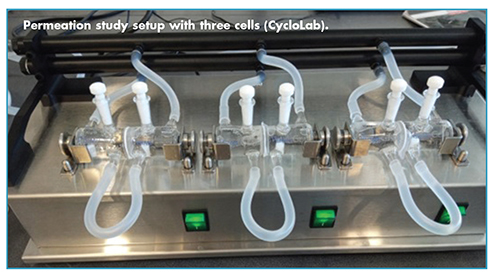
When an innovator applies to get approval for a new cyclodextrin-based composition of a known drug compound, the question of bioequivalence may be raised by the pharmaceutical authorities, even for injectables. The U.S. Food and Drug Administration Center for Drug Evaluation and Research (CDER) issued a draft guidance document entitled “Sameness Evaluations in an ANDA – Active Ingredients” in November 2022 stating that, in general, cyclodextrin complexes do not constitute new chemical forms that are considered in determining active ingredient sameness because they are not intended to furnish pharmacological activity (or other direct effect in the diagnosis, cure, mitigation, treatment, or prevention of disease) associated with the approved use of the drug product. Since this guideline is a nonbinding recommendation, the innovator may be interrogated to demonstrate bioequivalence of an already marketed composition compared to the novel complex, cyclodextrin-based formulation. Traditional animal studies to justify bioequivalence are demanding in terms of cost, duration of test, and documentation, including sensitive ethical issues. To bypass this difficulty, biowaiver data such as in vitro permeation studies are often found appropriate in the approval process of the cyclodextrin-based composition.
“CycloLab conducts relatively facile comparative in vitro tests for a relevant marketed product (as a reference) and a novel cyclodextrin-based formulation, regardless if the new product candidate is developed by CycloLab or previously elaborated by a third party,” explains Dr. Istvan Puskas, Research Chemist at CycloLab. “By conducting in vitro permeation studies, the study sponsor may get insight into the characteristics of the dissolved drug in simulated biological fluids or in human plasma. The kinetics of the drug permeation rates in solution specific to the reference marketed product versus the cyclodextrin-based complex may establish adequate justification of bioequivalence. The test is performed using semi-permeable membranes of specific pore size distribution and retention capabilities according to molecular weight. This technique enables discrimination of unbound portion of drug substance from that included into cyclodextrin or associated to protein.”
To further illustrate the strength of drug-cyclodextrin interactions, computer modeling on the noncovalent association, as well as aggregation studies in different dilutions, may be performed. If required, competitive cyclodextrin binding studies may be provided in human serum albumin (HAS) as well as in blood plasma. CycloLab’s study report on the experimental data is issued ready for submission to relevant authorities to support the approval process.
Gattefossé: Lipid-Based Approach Improved Exposure by Two-fold for Poorly Soluble Active
Chemical modification approaches like salt formation, complexation, among others, are a few of the many approaches for improving a molecule’s solubility, but modifications present a new set of challenges to overcome, and they may not outweigh the benefits, says Masumi Dave, Application Laboratory Manager at Gattefossé. “Any change to a drug’s molecular properties can set the development clock back because the modified molecule’s physico-chemical characteristics and pharmacokinetic parameters will then be different, which may impact solubility, stability, bioavailability, and safety.”
Modification by formulation design using lipid-based excipients to prepare SEDDS/SMEDDS may enhance bioavailability and solubility by utilizing multiple BAE mechanisms, she says. Lipid-based excipients like Labrasol® ALF, Gelucire® 48/16, Gelucire 59/14, etc., can be used to deliver lipophilic molecules that are otherwise difficult to solubilize. Self-emulsifying, microemulsifying or nanoemulsifying drug delivery systems (SMEDDS/SNEDDS/SEDDS) can help improve solubilization and absorption of these compounds in vivo.
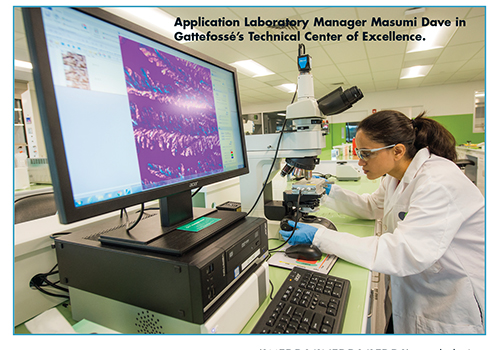
“We worked with a customer’s API that was subject to first-pass metabolism and had solubility and bioavailability challenges,” Ms. Dave explains. “Following a lipid-based approach, a formulation was developed with a combination of excipients having short chain fatty acid esters like Labrasol ALF and long chain fatty acid esters like Labrafil® M 1944 CS to aid tight junction opening, promote lymphatic uptake, and to generally improve systemic availability of this active. Excipient selection was based on solubility of the active in the excipient, excipient miscibility, and the target drug load. This formulation improved the exposure (Cmax) in dogs by two-fold with lower variability compared to the control formulation.”
Hovione: Using ASDs to Turn Candidates into Drugs
Hovione has experienced some very marked trends that have driven the way the CDMO produces drug dosage forms. One of these is the increased prevalence of new chemical entities that are poorly soluble and the establishment of amorphous solid dispersions (ASDs) as the predominant platform to overcome poor bioavailability – in great part leveraged by spray drying, which has become a reliable industrial-scale platform. Filipe Gaspar, Vice President Technology Intensification at Hovione, says: “This has led to significant advances on the formulation of amorphous materials, namely in material and analytical sciences, the development of novel (sometimes enabling, like Dispersome®) excipients, and the need for fit-for-purpose dosage forms.”
He explains that Hovione’s R&D portfolio is made up of more than 60 projects in different development phases, comprising active ingredients with solubility challenges. “Our approach starts by understanding the most appropriate bioavailability enhancement approach to increase solubility/bioavailability,” he says. “In most cases, converting the active materials into an ASD provides the larger opportunity to turn these candidates into viable drugs. In these cases, we apply a thorough screening procedure with as little as 5g of active, Hovione’s ASD-HIPROS, to identify the best composition, in terms of performance, physical stability, and manufacturability. Often, a ten-fold increase in performance – often more – is observed without compromising other drug attributes.”
Latitude: Drug Substance Nanoparticles Are Often the Only Option
Nanoparticles of drug substances, which are crystalline or non-crystalline insoluble API milled to about 100-200nm particles, have received a lot of attention recently. This form can provide enhanced dissolution and bioavailability for insoluble APIs while requiring only a very small proportion of excipients (about 10% of the total weight of the dosage form); thus a nanoparticle is probably the only feasible technology for an insoluble drug substance that has a relatively high oral dose, e.g., >250mg/dose (a High Dose Insoluble API).
In contrast, all other formulations that can enhance solubility/bioavailability require a large proportion of excipients – usually 50% to 90% of the drug dose to solubilize the drug, which inevitably leads to a bulky dosage form (e.g., a large tablet) that is inconvenient or impractical, says Dr. Andrew Chen, President and Founder of Latitude Pharmaceuticals. “A final oral dosage form can only realistically be provided with a limited total weight of about 1.5g for a tablet and 1g for a capsule,” he explains. “Therefore, many other solubility/bioavailability enhancing formulations such as SEDDS, lipid-based nanoparticles, solid dispersion, liposomes, and solvent formulations are not suited for a High Dose Insoluble API. An oral formulation (e.g., tablet, capsule, granule, or oral suspension) containing nanoparticles of the drug substance is the best and often the only option.”
Two different and innovative approaches were recently deployed to solve a client’s bioavailability and solubility challenges. A client wished to develop an intravenous (IV) and an oral (PO) formulation for one API, but the API was very insoluble and had a high-dose (>350mg); the API was soluble only in dimethyl sulfoxide (DMSO). “We developed an IV formulation that was an oil/water nanoemulsion, with 150nm average droplet size, using a natural phospholipid and triglyceride oil,” Dr. Chen describes. “The formulation was able to dissolve the dose completely, permitted IV infusion, and was very well tolerated. For the PO formulation, a variation of the nanoemulsion containing API nanoparticles was developed and achieved unprecedented oral bioavailability in test animals.”
Lonza: Weighing the Risks & Benefits of BAE Technologies
Improving a drug’s solubility, dissolution rate, or permeability can be required to enhance bioavailability. When a drug is limiting oral absorption, a wide variety of bioavailability enhancement (BAE) technologies are available to address these risks. “At Lonza, we balance the risks and benefits of each approach and apply the best fit for a drug’s specific BAE needs,” says Craig Sather, Senior Principal Investigator in Bioavailability Enhancement, Lonza. “The approach we take is dictated by the unique physiochemical properties of each new chemical entity (NCE) and the target product profile, including the intended dose and patient population.”
Technologies used at Lonza for increasing the solubility of a drug can include forming salts, cocrystals, self-emulsifying drug delivery systems (SEDDS), and amorphous solid dispersion (ASDs). Using an integrated drug development approach bridging drug substance solid form selection (SFS) with BAE technologies, Lonza offers customers reduced time to clinic utilizing optimized formulations and processes, she says. Incorporating risk assessments for formulation and process development drives the identification of the key rate-limiting steps to absorption and rapid prototyping through clinical scale-up.
“Applying risk assessments, we routinely mitigate issues such as precipitation of a lower solubility form, chemical degradation, and physical state change when employing a BAE technology,” says Sather. “Based on our experience, gaining a comprehensive understanding of a molecule’s solid form landscape is essential to a successful drug development program, regardless of the final dosage form.”
The selection of a polymorph that will minimize risk prior to a clinical formulation development effort will reduce risk in later stages. When a BAE technology is utilized, the in-going drug substance is often a crystalline form that will require acceptable shelf-life prior to downstream processing. As part of Lonza’s integrated offering, the SFS team works side-by-side with the drug product development team to realize the benefits of an optimized solid-form lead selection.
In parallel with the lead selection of the solid form, Lonza’s drug product development teams utilize a variety of in silico and in vitro techniques for technology selection. “Our bioperformance toolkit leverages proven methods to assess a drug’s physiochemical properties,” he explains. These properties are fed to predictive tools, such as physiologically based pharmacokinetic (PBPK) models, to perform an adsorption risk assessment. The output of these efforts ensures rapid formulation development and confidence that in vivo exposures have been optimized. Performing physical form manipulations, such as exploring various polymorphs, ASDs, micronization, or nanosuspensions, can be used to address the solubility or dissolution limitations of drugs. Chemical enhancement approaches, such as creating a salt form, can significantly alter the physiochemical properties to overcome absorption rate challenges after the compound lead selection has occurred.
“At Lonza, we have extensive knowledge and experience employing BAE technologies on thousands of our customers’ compounds that can be utilized to overcome absorption challenges and ensure sufficient exposure of the drug,” says Sather. “We use a risk-based approach to successfully navigate the multitude of options available and align on a design that is needed for the drug, whether that is a simple crystalline form in a capsule or a more complex solubility-enhanced formulation utilizing one or more BAE technologies.”
Lubrizol: Two Novel Excipients May Rescue APIs From Solubility Issues
Solubility and bioavailability challenges are the most pressing needs in the field of small molecules. While there are traditional excipients and techniques available to address these issues, they often have low efficiency and lead to complex manufacturing processes or undesired side effects for patients.
“At Lubrizol, we believe that novel excipient technologies have the potential to overcome solubility and bioavailability-related challenges while producing more patient-friendly dosage forms and creating opportunities for new intellectual property,” says Nick DiFranco, MEM Global Market Manager, Novel Pharmaceutical Technologies at Lubrizol.
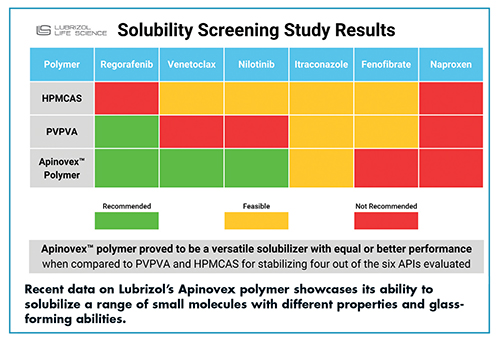
Lubrizol Life Science’s oral- grade Apinovex™ and injectable-grade Apisolex™ polymers were designed to overcome poor solubility using simple, scalable manufacturing techniques. Apinovex and Apisolex are excipient-grade polymers that offer IP-protection and lifecycle management for BCS Class II and IV APIs. Apinovex polymers are GMP-validated, high molecular-weight polyacrylic acid excipients designed to provide both processing and formulation benefits for spray-dried amorphous solid dispersions (ASDs), explains Mr. DiFranco. Apinovex polymers enable formulators to achieve stable, high drug loading (up to 80%) and up to 10x improvement in drug release for crystalline APIs. With Apinovex, formulators can develop efficient, IP-protected oral solid dosage forms for a range of poorly soluble APIs.
Recently, Lubrizol and Research Center for Pharmaceutical Engineering (RCPE) published new data on the Apinovex polymer, showcasing its ability to solubilize a broad range of small molecules with different properties and glass-forming abilities. Mr. DiFranco explains that the data demonstrated that Apinovex polymer could match or improve upon the performance of traditional excipients such as HPMC-AS and PVP-VA for several drugs, including challenging beyond-rule-of-5 compounds such as venetoclax, nilotinib, and itraconazole. Apinovex polymer demonstrated good solubilizing properties and supersaturation maintenance in the initial study, and new spray drying trials will be run later this year.
“Given these results, we view the Apinovex polymer as a promising new tool for formulators working on oral amorphous solid dispersions (both NCEs and 505(b)(2) products),” he says.
The Apisolex polymer is an injectable-grade poly (amino acid)-based co-polymer that has been shown to increase the solubility of hydrophobic APIs by up to 50,000-fold where other commonly-used excipients fail (such as surfactants, PEG-based polymers, and cyclodextrins). “Robustly patented, safe, efficient, and scalable, Apisolex formulations can achieve drug loading of up to 40% and dramatically increase the achievable concentration of API in water,” says Mr. DiFranco.
The Apisolex polymer utilizes straightforward mixing/homogenization techniques coupled with filtration or lyophilization to produce the desired end product – either a powder for reconstitution or a ready-to-inject sterile liquid. He says: “The technology has proven effective with a broad range of small molecule APIs, demonstrating both improved compatibility and efficiency when compared to traditional surfactants and polymeric solubilizers. The effectiveness of this tool, coupled with its ease of use, led to two formulation awards last year, including first place in the Finished Formulation category at the 2023 CPhI Pharma Awards. The Apisolex polymer was recognized as the latest solubility-enhancing excipient to be launched specifically for parenteral use in decades, and we view it as an enabling technology for rescuing new APIs from solubility and bioavailability challenges.”
Nanoform: Proprietary Green Nano Tech Obtains Desired Particle Size
As the complexity and lipophilicity of drug candidates are expected to further increase, there is a constant need to evolve druggability-enabling technologies – and to develop new ones. Several new technologies have reached preclinical or clinical evaluation. One of the most recent strategies to reduce particle size, and in certain cases alter the crystallinity of compounds, is Nanoform’s Controlled Expansion of Supercritical Solutions (CESS®) technology, which works by dissolving an API in supercritical carbon dioxide, then controlling precipitation to obtain the desired particle size distribution and polymorphic form. Because it does not require the use of excipients and organic solvents, CESS is a green technology.
“It is powerful in helping formulators decrease the particle size of a pure drug substance to the very lower edge of the nano range, which might offer dose reduction, elimination of food effect, and lower variability in pharmacokinetic parameters,” says Tamas Solymosi, Lead Scientist, Nanoform.
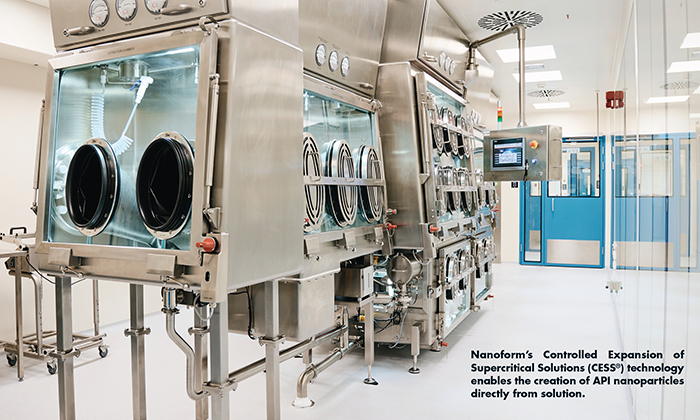
The majority of Nanoform’s partners present drug candidates that are notoriously difficult to formulate, with dissolution and/or solubility limitations. Mr. Solymosi says that at this point of development, usually after salt and polymorph screening and initial PK and toxicology studies, chemical modification is a last resort and partners prefer size reduction, solubilization, and solid dispersion strategies. He explains: “In certain projects, nanoforming by CESS technology has enabled an order of magnitude increases in bioavailability, or the complete elimination of food interaction. Moreover, in general we do observe lower variability in PK parameters compared to reference formulations.”
One partner presented Nanoform with a prototypical poorly soluble drug candidate that was intended to be formulated as a hydrogel. Previous solubilization techniques failed, and nanomilling turned out to be suboptimal. Nanoforming proved to be successful and the nanoformed API could be incorporated into high drug load formulations, eliminating a major roadblock to the partner’s investigational new drug (IND) application.
The decrease in inter-individual variability of PK parameters renders nanoformed drugs attractive as erratic dissolution from conventional drug formulations, coupled with inherent differences in gastrointestinal pH, motility, bile salt secretion, and other physiological factors that can lead to extreme variabilities. Mr. Solymosi says: “For certain drug products, this can result in subgroups of patients necessitating dose reduction due to toxicity issues or, on the other hand, yields underdosed patients with subtherapeutic drug levels leading to worse outcomes.”
Serán Bioscience: Flexible Formulations & Processes Support Clinical Study Needs
Due to the increasing complexity of new molecular therapies and the significant limitations of existing formulation technologies, there is a need for “outside the box” approaches to obtaining acceptable exposure. Fortunately, over the last decade, new technologies have been developed that enable bioavailability enhancement of complex compounds, with many of these drug delivery technologies demonstrated on a commercial scale. Examples include spray dried dispersions, nano-milling, and melt extrusion. Other approaches, such as salt forms and co-crystals are also applicable in many cases. With appropriate know-how and expertise, these technologies can be developed into selected dosage forms (adult and pediatric), such as suspensions, capsules, and tablets, explains Dan Smithey, PhD, President & CEO of Serán Bioscience.
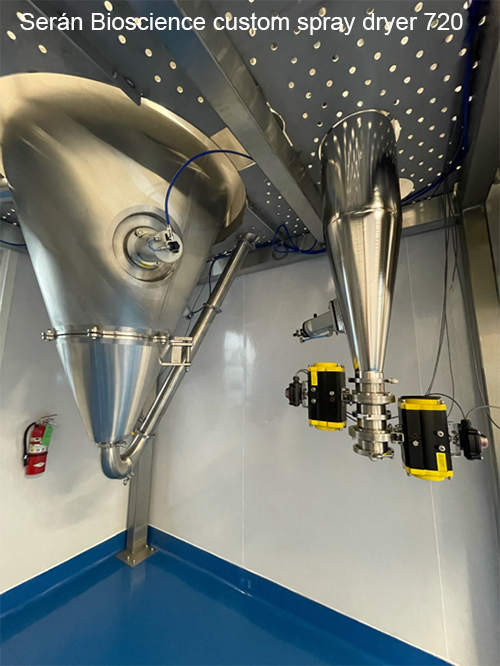
The development path for any new drug begins with preclinical tox studies that require very high drug exposure, he says. This is a common challenge that requires engineered formulations to achieve consistent results in dose-escalation and toxicology studies. These formulations ideally consist of suspended particles specifically engineered for these studies. Amorphous particles in suspension can provide exposure at high doses, but stabilizing these suspensions is critical to maintaining exposure over long dosing times.
“Spray-dried dispersions, stable amorphous formulations of an API, are by far the preferred approach to overcoming solubility limited absorption in the GI tract,” he says. Typically, the API and a polymer are combined in an organic solvent forming a solution, and then spray dried to form 5-50 um sized particles. These particles, which are a combination of an amphiphilic polymer and the API, are physically stable and have dissolution properties that lead to substantial increases in bioavailability relative to crystalline API alone. There are few other precedented formulation approaches that can broadly achieve performance, stability, and manufacturability goals needed for insoluble small molecules.
There are over 45 spray dried products on the market and hundreds in development today. “While it is truly a robust technology, it isn’t easy to develop or scale for those who don’t have the experience,” says Mr. Smithey. “It is critical that clients choose a CDMO with extensive particle engineering experience and proven processes to deliver successful spray-dried products.” He adds that it is estimated that as much as 80% of insoluble compounds that require an enabled approach should use spray drying as the preferred approach. “There are other approaches, such as twin-screw melt-extrusion that can produce amorphous materials, but this approach is only applicable to 10-20% of the APIs that clients have today,” he says.
By leveraging material science principles and the expertise to develop formulations (including enabled formulations, such as amorphous solid dispersions) and processes that are scalable and advanceable from the outset, Serán can provide its clients with flexible formulations and processes that can support their program as clinical study needs evolve.
“At Serán we believe that to resolve solubility and permeability concerns found in most new molecules, we must be creative and adopt new technologies,” he says. “With molecules becoming increasingly complex, its more critical than ever to work with a team that has a proven track record of success enabling these difficult molecules to become medicines.”
References
- Global Lipid Nanoparticle Manufacturing Market 2023-2035: Partnerships and Collaborations on the Rise for Lipid Nanoparticle Manufacturing, PR Newswire, Feb. 6, 2024, https://finance.yahoo.com/news/global-lipid-nanoparticle-manufacturing-market-171500528.html.
- Drug-drug co-amorphous systems: An emerging formulation strategy for poorly water-soluble drugs, Hongee Wang, et. al., Drug Discovery Today, Vol. 29, Issue 2, Feb. 2024, https://www.sciencedirect.com/science/article/abs/pii/S1359644624000084?via%3Dihub
- Pharmaceutical co-crystals: A green way to enhance drug stability and solubility for improved therapeutic efficacy, Anisha Chettri, et. al., Journal of Pharmacy and Pharmacology, Vol. 76, Issue 1, Jan. 2024, https://academic.oup.com/jpp/article/76/1/1/7339341.
- Cyclodextrin Market Size Worth $579.6 Million by 2032, CAGR: 5.7%: AMR, Allied Analytics LLP, GlobeNewswire, Feb. 12, 2024, https://au.finance.yahoo.com/news/cyclodextrin-market-size-worth-579-061400206.html.
- Patra, J. K, et. al. Nano based drug delivery systems: recent developments and future prospects. Journal of Nanobiotechnology 2018, 16 (1), 71. 10.1186/s12951-018-0392-8, https://jnanobiotechnology.biomedcentral.com/articles/10.1186/s12951-018-0392-8.
- De Jong, W. H.; Borm, P. J., Drug delivery and nanoparticles:applications and hazards. Int J Nanomedicine, 2008, 3 (2), 133-149. 10.2147/ijn.s596, https://www.ncbi.nlm.nih.gov/pmc/articles/PMC2527668/.
- Rawas-Qalaji, M. et. al., Microfluidics in drug delivery: review of methods and applications. Pharm Dev Technol, 2023, 28 (1), 61-77. 10.1080/10837450.2022.2162543, https://pubmed.ncbi.nlm.nih.gov/36592376/.
- Pharma, C. SEDDS and SMEDDS, https://www.crodapharma.com/en-gb/drug-delivery-solutions/explore-by-product/sedds-and-smedds#:~:text=Self_emulsifying_(or_self_microemulsifying,aqueous_phases_under_gentle_agitation.
- Kováčik, A.; Kopečná, M.; Vávrová, K., Permeation enhancers in transdermal drug delivery: benefits and limitations. Expert Opin Drug Deliv, 2020, 17 (2), 145-155.10.1080/ 17425247.2020.1713087, https://pubmed.ncbi.nlm.nih.gov/31910342/.
- Maher, S.; Brayden, D. J.; Casettari, L.; Illum, L., Application of Permeation Enhancers in Oral Delivery of Macromolecules: An Update. Pharmaceutics, 2019, 11 (1), 10.3390/pharmaceutics11010041, https://www.ncbi.nlm.nih.gov/pmc/articles/PMC6359609/.
- Williams, A.C.; Barry, B.W. Penetration enhancers. Adv Drug Deliv Rev, 2004, 56 (5), 603-618. 10.1016/j.addr.2003.10.025, https://pubmed.ncbi.nlm.nih.gov/15019749/.
Total Page Views: 12515









